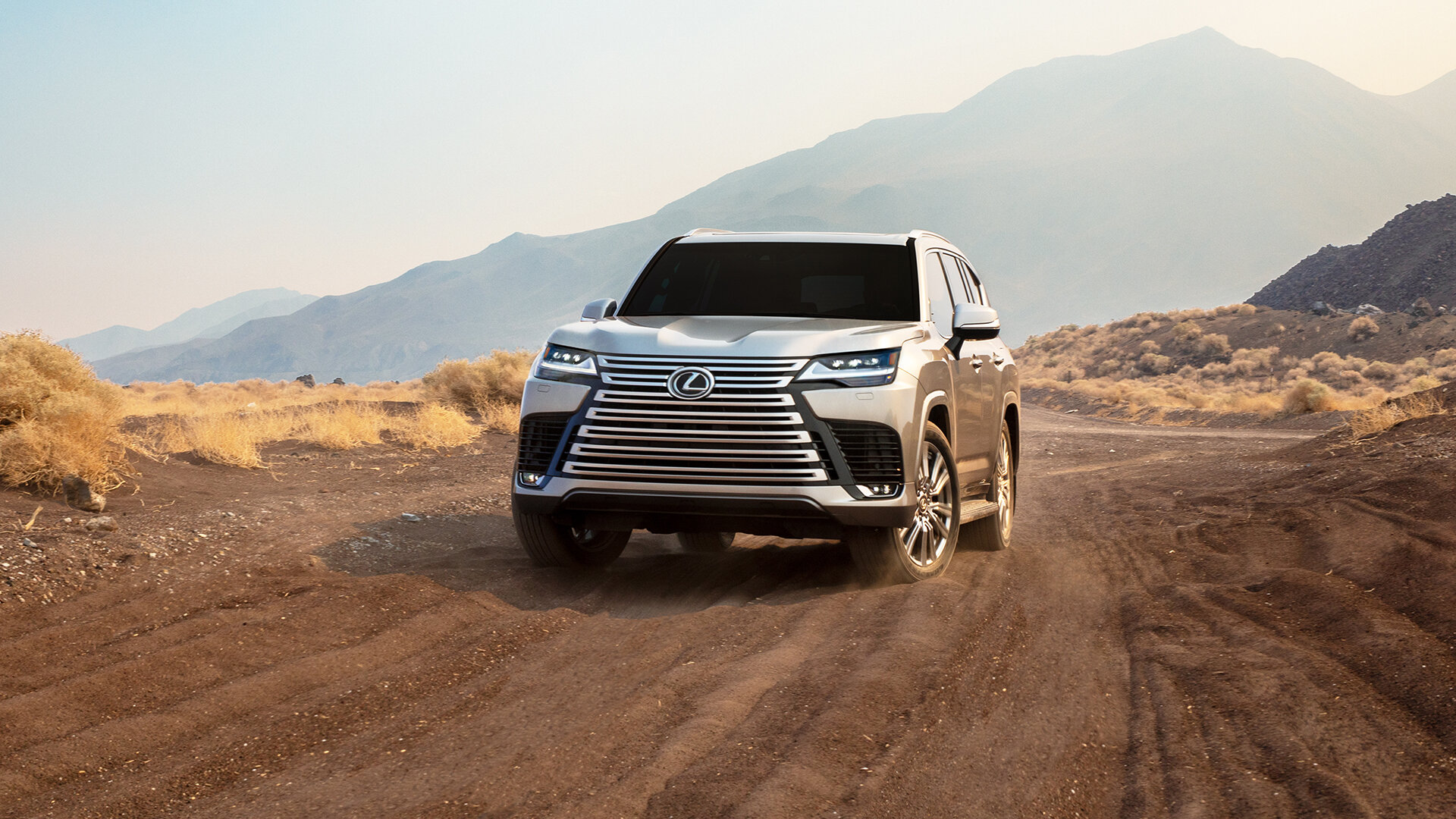New LX still purely dino-juiced
/You know how Lexus and Toyota are stepping up their electric push? Seems their biggest product selling here didn’t get that memo.
LEXUS has updated the offensive with its new super-lux version of the Land Cruiser 300 Series – or should that be the offensiveness?
The captivating (and that’s being kind) chat-magnet extreme rendition of the trademark spindle grille aside, the latest LX that has just been unveiled internationally surely also seems destined to create a certain degree of friction on local arrival early next year through its huge defiance of the brand’s direction toward Greener fields.
Enhancing its eco credential has been increasingly important to Lexus New Zealand; more that 70 percent of the luxury marque’s volume here is in petrol-electric hybrid form.
The latest to go wholly that way being the updated ES medium sedan, and next month it will have a fully electric crossover, the UX300e, with another coming next year.
The Lexus penetration with electric-assist reflects that achieved by its parent. Despite massive constraints on the supply line, Toyota New Zealand anticipates selling more than 10,000 hybrid vehicles this year.
Additionally, Toyota internationally is ramping up to ultimately release six fully electric products over the next few years to fuel ambition of ultimately achieving similar success in battery-electric vehicles (BEVs) at it has enjoyed with hybrids, by gaining leadership in battery technology and supply.
Nonetheless, it seems the LX is to continue to be the elephant being allowed to trample that ideal.
The one saving for the Lexus version of the Land Cruiser 300 Series – which should have been on sale here now, but has been withheld until early 2022 due to Covid complication – it that it has at last dropped its thumping great 280kW/540Nm 5.7-litre petrol V8 that ensured it singular status as the most fuel inefficient new luxury passenger vehicle powerplant on sale (hence the need for a 138 litre fuel tank).
For 2022 Lexus has confirmed two engines; a twin-turbo 3.5-litre V6 producing 301kW/649Nm (LX600) and a 3.3-litre V6 turbodiesel producing 227kW/700Nm. The LX500d that achieves the latter is only cited for NZ. The engine also equips in the LC300, with identical outputs.
Whether, let alone when, the largest lugger in the bent L stable might achieve any semblance of a hybrid powertrain has not been touched upon by international and local comment out of the brand. In respect to the latter, national brand boss Andrew Davis noted the marque was continuing “to focus on the right powertrains for all customer needs.”
That might to some seem a goading comment to those who will note that the North America-aimed Toyota Tundra, which shares its architecture with the Land Cruiser and this latest LX, has hybrid technology. If their truck can have this, why not ours?
It could be argued the LX still being a ‘thing’ also reflects an interesting intransigence by its maker. Even with a diesel it still remains difficult to fully fathom how something of this nature conforms to Toyota’s thinking about motoring in the future.
The previous LX was virtually the Lonesome George of its world. Dating back to 2007, it was easily the oldest model in Lexus-dom. Notwithstanding that large orthodox off-roaders out of Japan tend to have extra-long model lives, it was nonetheless longer-lived than most, undergoing four big refits during its model life.
If the latest LX is due the same programme, then conceivably it will still be in production beyond 2035, the potential point when NZ aims to stop sale of fossil-fuelled passenger product. By then, many rival SUVs will have also gone electric; Mercedes, BMW and Range Rover, for instance, all have plans to battery pack their respective offers in this price zone within the next few years.
The swagger of its striking look (which is mainly to do the with the front, as it retains the Land Cruiser profile) is matched by its immensity – which also includes a considerable kerbside weight, as even after adopting a lighter, much stronger all-new platform and achieving aluminium for the doors, is still only 200kg lighter than before.
The model has at least the same off-road capabilities as the donor. It has adjustable suspension which can raise the car to clear big boulders, as well as ‘Multi-Terrain Select’ that uses sensors to detect what surface you’re driving on and set the car up correctly.
Nonetheless, Lexus says with its model the ultimate is to make it a more comfortable and committed on-road drive.
Beyond that, it still majors in plush. The model has a completely new interior, bringing the cabin more up to date, with such items as dual-screen infotainment displays, with a 12-inch screen above the dashboard and a 7-inch screen below that. There’s plenty of wood, high quality carpets and leather.
A new trim level called ‘Ultra Luxury’ includes two captain’s chairs in the back, sunblinds and the option to move the front passenger seat forward for more rear legroom.
Lexus NZ has not cited prices but the donor spans three versions from $124,900 through to $144,990. The previous LX was $160,400 in diesel and $181,700 in petrol.





















